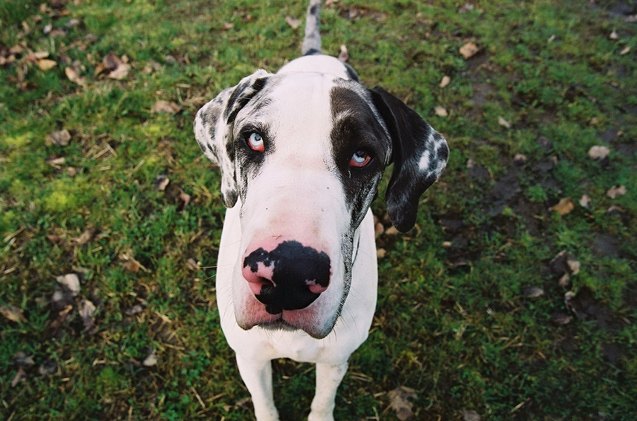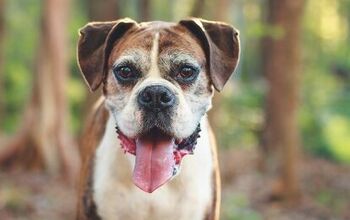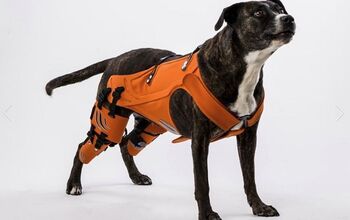What Is Hip Dysplasia In Dogs?

When it comes to keeping your dog healthy, there is only so much that you can do. Providing a healthy diet and keeping up with routine veterinary exams and vaccinations will go a long way to keep your dog in good shape. There are certain conditions, however, to which your dog may be genetically predisposed and you can’t do anything about it. One of these conditions is hip dysplasia. In this article you will learn the basics regarding what hip dysplasia is, how it affects your dog and what the treatment options may be for your dog.
The Basics of Hip Dysplasia
Hip dysplasia is a congenital (inherited) condition, which means that it is passed down from the parents to the offspring. This disease affects the hip joint – this is the point the hind leg connects to the body via a ball and socket joint. The head of the femur (leg bone) is shaped like a ball that fits into the socket of the hip joint, located on the pelvis. In a healthy dog, the ball and socket are perfectly shaped to match each other and a strong ligament holds the two bones together. In cases of hip dysplasia, however, the joint may be abnormally structured and/or the muscles and ligaments may be underdeveloped. This causes the two bones to lost contact and separate in a process referred to as subluxation. In essence, the head of the femur does not rest properly inside the hip socket and, in some cases, it may actually pop out.
Related: Great Dane
Causes and Symptoms
This disease can potentially affect any dog, but it is most common in large and giant breeds. Some of the breeds most at risk for hip dysplasia include German Shepherds, Golden Retrievers, Great Danes and Rottweilers. Certain breeds such as the Greyhound and the Borzoi have a low risk for hip dysplasia. While a dog born to parents with hip dysplasia is not guaranteed to develop the disease, his chances are much higher. If there are no carriers of the disease in a dog’s bloodline, he stands a much lower risk of developing the disease – this is why breeders thoroughly test for congenital conditions like hip dysplasia to ensure healthy litters. Though genetics are the primary factor in determining a dog’s risk for hip dysplasia, adequate nutrition impacts the likelihood of an at-risk dog developing the disease. Dogs that are genetically predisposed to hip dysplasia may also have a greater chance of developing the disease if they are over-exercised while young.
Related: Should You Add Dog Supplements To Your Pooch’s Diet?
The symptoms of hip dysplasia may vary from one case to another – in very mild cases, there may be no symptoms at all. One of the first symptoms you are likely to notice is stiffness in the hind legs and soreness in the hips as your dog gets up from sitting or lying down. You may also notice your dog begin reluctant to exercises or climb stairs. As the disease progresses, your dog may begin to favor one of his hind legs, limping or hopping to avoid putting weight on it. If the disease goes untreated, the affected limb may eventually go lame.
Treatment Options
If your dog is genetically predisposed to hip dysplasia, there is no way to effectively prevent it from developing. There are, however, several treatment options available including total hip replacement in severe cases. Maintaining a healthy weight, encouraging moderate exercise and providing warm and comfortable sleeping areas are all ways to manage hip dysplasia in cases where it has already begun to develop. Oral supplements like chondroitin and glucosamine may be beneficial as well. In some cases, your vet may recommend anti-inflammatory medications – particularly if your dog has developed osteoarthritis – possibly in conjunction with pain medications.
Hip dysplasia is a very serious disease and one that can do a great deal of damage if it goes untreated. Do yourself a favor by purchasing a dog only from a reputable breeder who has performed the proper genetic screenings and do your dog a favor by providing adequate diet and exercise. If your dog does develop symptoms of hip dysplasia, seek veterinary care as soon as possible to begin treatment before the problem gets worse.

Kate Barrington is the loving owner of two cats (Bagel and Munchkin) and a noisy herd of guinea pigs. Having grown up with golden retrievers, Kate has a great deal of experience with dogs but labels herself a lover of all pets. Having received a Bachelor's degree in English, Kate has combined her love for pets and her passion for writing to create her own freelance writing business, specializing in the pet niche.
More by Kate Barrington























